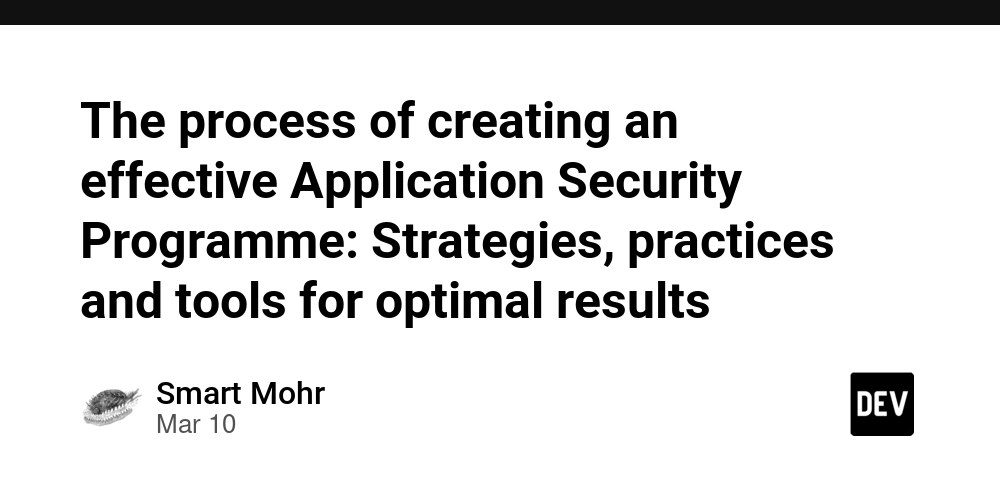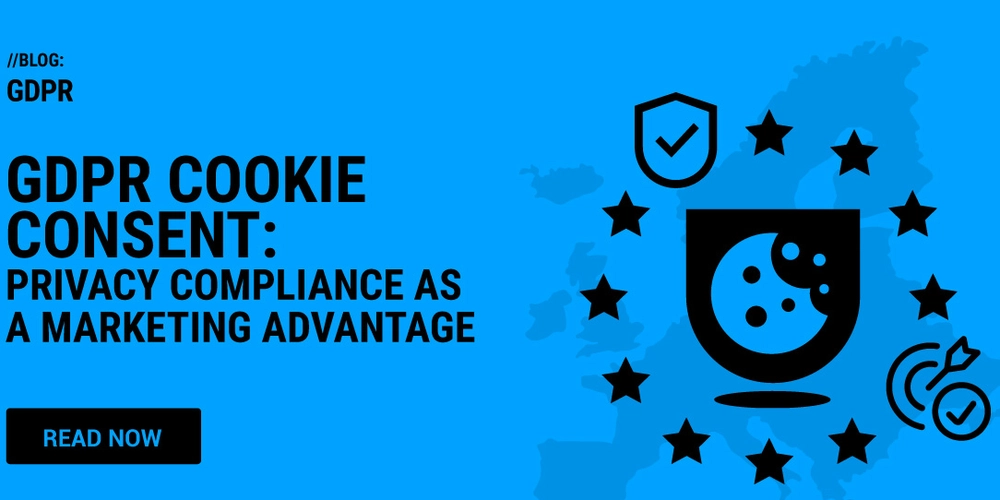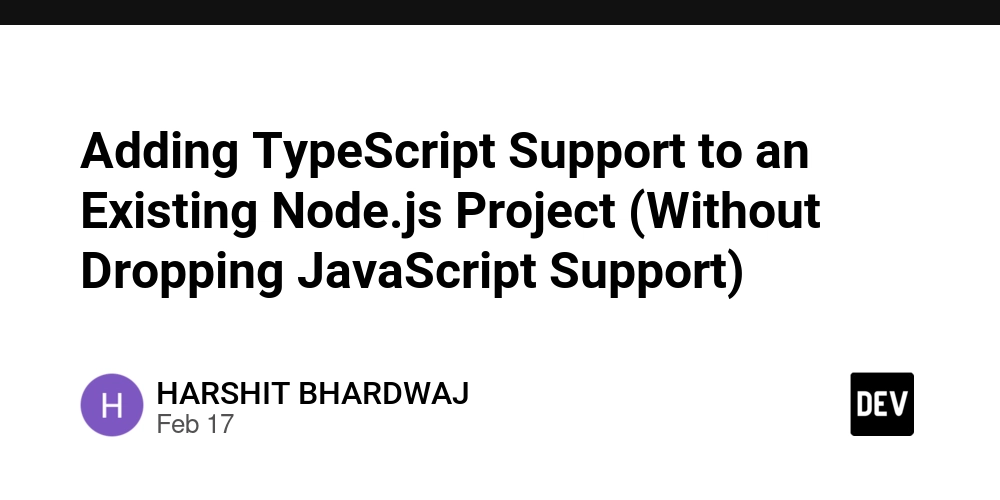The process of creating an effective Application Security Programme: Strategies, practices and tools for optimal results
AppSec is a multi-faceted, robust approach that goes beyond vulnerability scanning and remediation. The constantly changing threat landscape coupled with the rapid pace of technological advancement and the growing complexity of software architectures requires a comprehensive, proactive strategy that seamlessly integrates security into each phase of the development lifecycle. This comprehensive guide explains the fundamental components, best practices and cutting-edge technologies that underpin a highly effective AppSec program that empowers organizations to safeguard their software assets, mitigate risks, and foster an environment of security-first development. At the heart of a successful AppSec program lies a fundamental shift in thinking that sees security as an integral part of the process of development, rather than an afterthought or separate undertaking. This paradigm shift requires a close collaboration between security, developers operations, and others. It reduces the gap between departments and creates a sense of shared responsibility, and encourages a collaborative approach to the security of the applications are developed, deployed and maintain. When adopting the DevSecOps approach, companies can incorporate security into the fabric of their development processes making sure security considerations are taken into consideration from the very first phases of design and ideation up to deployment and maintenance. The key to this approach is the creation of specific security policies as well as standards and guidelines that provide a framework to secure coding practices, threat modeling, and vulnerability management. These policies must be based on the best practices of industry, including the OWASP top ten, NIST guidelines as well as the CWE. They should take into account the distinct requirements and risk that an application's as well as the context of business. By creating these policies in a way that makes them accessible to all stakeholders, companies can guarantee a consistent, standardized approach to security across all their applications. It is essential to fund security training and education courses that assist in the implementation of these guidelines. These initiatives should seek to equip developers with the information and abilities needed to create secure code, recognize possible vulnerabilities, and implement best practices for security throughout the development process. The course should cover a wide range of topics, including secure coding and common attack vectors as well as threat modeling and principles of secure architectural design. Through fostering a culture of continuous learning and providing developers with the tools and resources they need to build security into their work, organizations can create a strong foundation for a successful AppSec program. Alongside training companies must also establish robust security testing and validation procedures to discover and address weaknesses before they are exploited by malicious actors. This requires a multi-layered method which includes both static and dynamic analysis methods along with manual penetration testing and code reviews. At the beginning of the development process, Static Application Security Testing tools (SAST) can be utilized to find vulnerabilities, such as SQL Injection, cross-site scripting (XSS) and buffer overflows. Dynamic Application Security Testing tools (DAST) are in contrast, can be utilized to test simulated attacks on running applications to find vulnerabilities that may not be discovered by static analysis. autonomous agents for appsec Although these automated tools are crucial in identifying vulnerabilities that could be exploited at large scale, they're not the only solution. Manual penetration testing and code reviews conducted by experienced security professionals are equally important for uncovering more complex, business logic-related weaknesses that automated tools might miss. When you combine automated testing with manual validation, organizations can obtain a more complete view of their application's security status and prioritize remediation efforts based on the severity and potential impact of the vulnerabilities identified. Organizations should leverage advanced technologies, such as machine learning and artificial intelligence to enhance their capabilities for security testing and vulnerability assessments. AI-powered tools can analyse huge quantities of application and code data, identifying patterns as well as abnormalities that could signal security issues. These tools can also increase their detection and prevention of new threats by learning from previous vulnerabilities and attacks patterns. One particularly promising application of AI within AppSec is using code property graphs (CPGs) to facilitate more precise and effective vulnerability detection and remediation. ai powered appsec explore security tools CPGs are an extensive representation of an application’s code

AppSec is a multi-faceted, robust approach that goes beyond vulnerability scanning and remediation. The constantly changing threat landscape coupled with the rapid pace of technological advancement and the growing complexity of software architectures requires a comprehensive, proactive strategy that seamlessly integrates security into each phase of the development lifecycle. This comprehensive guide explains the fundamental components, best practices and cutting-edge technologies that underpin a highly effective AppSec program that empowers organizations to safeguard their software assets, mitigate risks, and foster an environment of security-first development.
At the heart of a successful AppSec program lies a fundamental shift in thinking that sees security as an integral part of the process of development, rather than an afterthought or separate undertaking. This paradigm shift requires a close collaboration between security, developers operations, and others. It reduces the gap between departments and creates a sense of shared responsibility, and encourages a collaborative approach to the security of the applications are developed, deployed and maintain. When adopting the DevSecOps approach, companies can incorporate security into the fabric of their development processes making sure security considerations are taken into consideration from the very first phases of design and ideation up to deployment and maintenance.
The key to this approach is the creation of specific security policies as well as standards and guidelines that provide a framework to secure coding practices, threat modeling, and vulnerability management. These policies must be based on the best practices of industry, including the OWASP top ten, NIST guidelines as well as the CWE. They should take into account the distinct requirements and risk that an application's as well as the context of business. By creating these policies in a way that makes them accessible to all stakeholders, companies can guarantee a consistent, standardized approach to security across all their applications.
It is essential to fund security training and education courses that assist in the implementation of these guidelines. These initiatives should seek to equip developers with the information and abilities needed to create secure code, recognize possible vulnerabilities, and implement best practices for security throughout the development process. The course should cover a wide range of topics, including secure coding and common attack vectors as well as threat modeling and principles of secure architectural design. Through fostering a culture of continuous learning and providing developers with the tools and resources they need to build security into their work, organizations can create a strong foundation for a successful AppSec program.
Alongside training companies must also establish robust security testing and validation procedures to discover and address weaknesses before they are exploited by malicious actors. This requires a multi-layered method which includes both static and dynamic analysis methods along with manual penetration testing and code reviews. At the beginning of the development process, Static Application Security Testing tools (SAST) can be utilized to find vulnerabilities, such as SQL Injection, cross-site scripting (XSS) and buffer overflows. Dynamic Application Security Testing tools (DAST) are in contrast, can be utilized to test simulated attacks on running applications to find vulnerabilities that may not be discovered by static analysis.
autonomous agents for appsec Although these automated tools are crucial in identifying vulnerabilities that could be exploited at large scale, they're not the only solution. Manual penetration testing and code reviews conducted by experienced security professionals are equally important for uncovering more complex, business logic-related weaknesses that automated tools might miss. When you combine automated testing with manual validation, organizations can obtain a more complete view of their application's security status and prioritize remediation efforts based on the severity and potential impact of the vulnerabilities identified.
Organizations should leverage advanced technologies, such as machine learning and artificial intelligence to enhance their capabilities for security testing and vulnerability assessments. AI-powered tools can analyse huge quantities of application and code data, identifying patterns as well as abnormalities that could signal security issues. These tools can also increase their detection and prevention of new threats by learning from previous vulnerabilities and attacks patterns.
One particularly promising application of AI within AppSec is using code property graphs (CPGs) to facilitate more precise and effective vulnerability detection and remediation. ai powered appsec explore security tools CPGs are an extensive representation of an application’s codebase which captures not just its syntactic structure, but as well as complex dependencies and connections between components. AI-powered tools that make use of CPGs are able to perform a context-aware, deep analysis of the security stance of an application, and identify security vulnerabilities that may have been overlooked by traditional static analyses.
CPGs can be used to automate the remediation of vulnerabilities using AI-powered techniques for code transformation and repair. Through understanding the semantic structure of the code as well as the characteristics of the identified vulnerabilities, AI algorithms can generate targeted, context-specific fixes that tackle the root of the problem instead of only treating the symptoms. This strategy not only speed up the process of remediation but also decreases the possibility of introducing new security vulnerabilities or breaking functionality that is already in place.
Another crucial aspect of an efficient AppSec program is the integration of security testing and validation into the ongoing integration and continuous deployment (CI/CD) pipeline. By automating security checks and embedding them in the process of building and deployment it is possible for organizations to detect weaknesses early and prevent them from entering production environments. The shift-left security approach allows for faster feedback loops and reduces the amount of time and effort required to identify and fix issues.
In order to achieve this level of integration, businesses must invest in proper infrastructure and tools to enable their AppSec program. This does not only include the security tools but also the platform and frameworks which allow seamless automation and integration. Containerization technologies like Docker and Kubernetes can play a vital role in this regard by providing a consistent, reproducible environment to conduct security tests and isolating potentially vulnerable components.
Alongside technical tools effective platforms for collaboration and communication are crucial to fostering a culture of security and enabling cross-functional teams to effectively collaborate. Issue tracking tools like Jira or GitLab can assist teams to focus on and manage security vulnerabilities. Chat and messaging tools like Slack or Microsoft Teams can facilitate real-time communication and knowledge sharing between security professionals as well as development teams.
The success of any AppSec program isn't solely dependent on the technology and tools employed and the staff who help to implement the program. In order to create a culture of security, you need strong leadership with clear communication and an effort to continuously improve. The right environment for organizations can be created where security is not just a checkbox to mark, but an integral aspect of growth by encouraging a shared sense of responsibility, encouraging dialogue and collaboration as well as providing support and resources and encouraging a sense that security is a shared responsibility.
To maintain the long-term effectiveness of their AppSec program, businesses must also focus on establishing meaningful measures and key performance indicators (KPIs) to measure their progress and find areas for improvement. These metrics should be able to span the entire lifecycle of applications, from the number of vulnerabilities identified in the development phase through to the duration required to address issues and the security status of applications in production. By regularly monitoring and reporting on these metrics, organizations can prove the worth of their AppSec investments, spot trends and patterns and take data-driven decisions regarding where to concentrate on their efforts.
To keep pace with the ever-changing threat landscape, as well as new best practices, organizations need to engage in continuous education and training. This could include attending industry-related conferences, participating in online-based training programs, and collaborating with external security experts and researchers to stay abreast of the latest technologies and trends. Through the cultivation of a constant learning culture, organizations can ensure their AppSec programs are flexible and resilient to new threats and challenges.
It is also crucial to realize that security of applications is not a single-time task but an ongoing process that requires a constant dedication and investments. It is essential for organizations to constantly review their AppSec plan to ensure it remains effective and aligned to their business objectives when new technologies and techniques emerge. By adopting a strategy that is constantly improving, encouraging collaboration and communication, and harnessing the power of new technologies like AI and CPGs. Organizations can build a robust, adaptable AppSec program which not only safeguards their software assets but also allows them to develop with confidence in an ever-changing and challenging digital world.
ai powered appsec











































































































































































![[The AI Show Episode 142]: ChatGPT’s New Image Generator, Studio Ghibli Craze and Backlash, Gemini 2.5, OpenAI Academy, 4o Updates, Vibe Marketing & xAI Acquires X](https://www.marketingaiinstitute.com/hubfs/ep%20142%20cover.png)




























































































































![[DEALS] The Premium Learn to Code Certification Bundle (97% off) & Other Deals Up To 98% Off – Offers End Soon!](https://www.javacodegeeks.com/wp-content/uploads/2012/12/jcg-logo.jpg)


![From drop-out to software architect with Jason Lengstorf [Podcast #167]](https://cdn.hashnode.com/res/hashnode/image/upload/v1743796461357/f3d19cd7-e6f5-4d7c-8bfc-eb974bc8da68.png?#)








































































































.png?#)

































_Christophe_Coat_Alamy.jpg?#)
 (1).webp?#)





































































































![Apple Considers Delaying Smart Home Hub Until 2026 [Gurman]](https://www.iclarified.com/images/news/96946/96946/96946-640.jpg)
![iPhone 17 Pro Won't Feature Two-Toned Back [Gurman]](https://www.iclarified.com/images/news/96944/96944/96944-640.jpg)
![Tariffs Threaten Apple's $999 iPhone Price Point in the U.S. [Gurman]](https://www.iclarified.com/images/news/96943/96943/96943-640.jpg)




































































































































